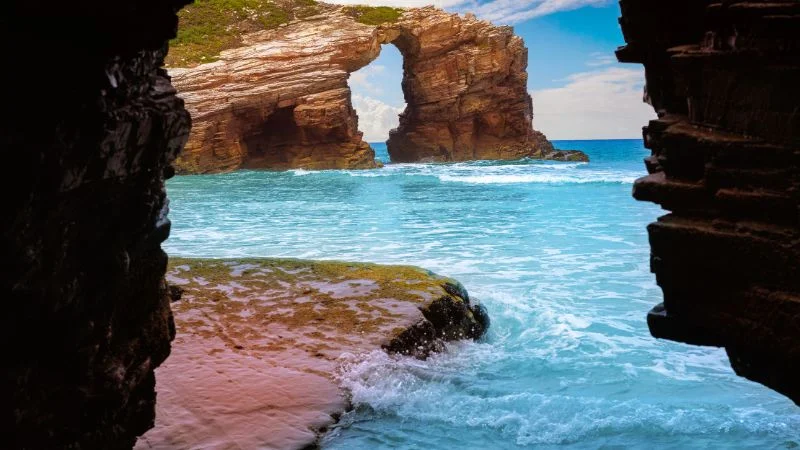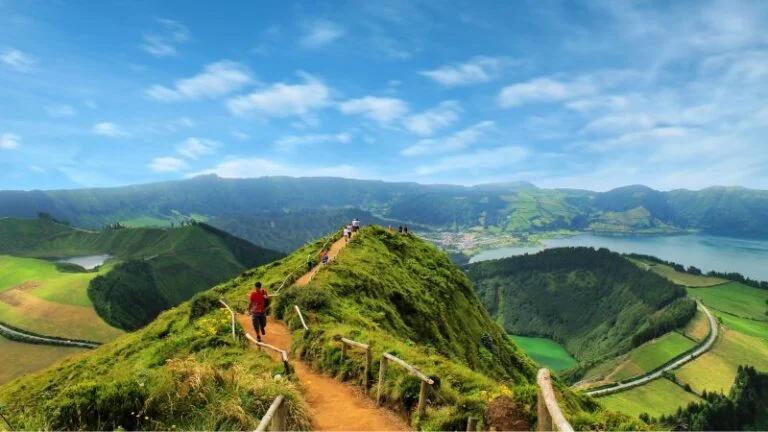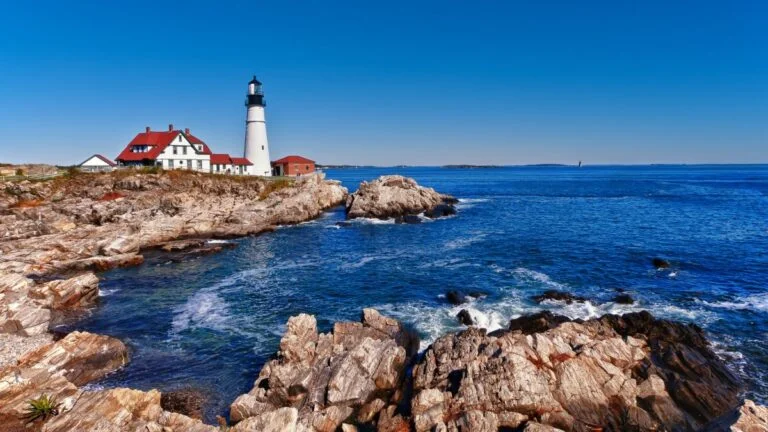50 Facts About Spain You Need to Know Before Traveling There

As participants in Amazon Associates and other programs, we earn from qualifying purchases. This comes at no additional cost to you. For more details, see our Affiliate Disclosure.
Spain, a country renowned for its vibrant culture, stunning landscapes, and rich history, offers an array of experiences that captivate travelers from around the globe. Before packing your bags for this enchanting destination, it’s essential to arm yourself with some lesser-known facts that will enrich your journey. From the architectural marvels that dot its cities to the culinary delights that await at every corner, understanding Spain’s unique customs, traditions, and quirks can transform a simple trip into an unforgettable adventure. This article unveils 50 intriguing facts about Spain that are crucial for every traveler to know, ensuring you savor every moment of your Spanish escapade to the fullest.
1. Spain Is a Country of Many Languages
While Spanish (Castilian) serves as Spain’s official language and is spoken by the majority, the country’s linguistic landscape is far more diverse. Regional languages like Catalan, Galician, and Basque are not only spoken by millions but also enjoy co-official status in their respective regions. This multilingual mosaic is a testament to Spain’s rich cultural and historical tapestry, offering travelers a unique opportunity to experience Spain’s regional identities through their distinct languages.
2. Home to the World’s Second Largest Number of UNESCO World Heritage Sites
Spain’s remarkable cultural and natural heritage is globally recognized, boasting the world’s second-largest number of UNESCO World Heritage Sites. From the architectural wonders of Antoni Gaudí in Barcelona to the ancient city of Toledo, Spain offers a wealth of sites that capture the imagination and transport visitors through time. These sites are not only a source of national pride but also a must-visit for any traveler eager to explore the depths of Spain’s historical and artistic contributions to the world.
3. The Siesta Is More Than Just a Nap
The siesta, often romanticized as a midday nap, is deeply woven into Spain’s cultural fabric. Originating as a practical response to the peak afternoon heat, it has evolved into a symbol of the Spanish lifestyle, emphasizing a balanced approach to work and rest. While modern life and business practices have curtailed the siesta’s prevalence, it remains a cherished tradition in many parts of the country, reflecting Spain’s broader values around family, leisure, and well-being.
4. Spanish Cuisine Goes Beyond Paella
While paella is undoubtedly a pillar of Spanish cuisine, the country’s gastronomic landscape is as diverse as its geography. From the seafood of Galicia to the cured meats of Castile, each region boasts its own culinary traditions and specialties. Tapas, small dishes shared among friends, embody the communal spirit of Spanish dining. This rich culinary diversity invites travelers to embark on a flavorful journey across Spain, one plate at a time.
5. Flamenco Is Not Just a Dance
Flamenco is an intoxicating blend of song, dance, and guitar music, originating from Andalusia but beloved across Spain and beyond. This powerful art form, recognized by UNESCO as an Intangible Cultural Heritage, tells stories of passion, sorrow, and joy through its intricate rhythms and movements. Flamenco is not merely a dance; it is a deeply emotional experience that connects performers and audiences to the vibrant soul of Spanish culture.
6. Spain Has Some of the Oldest Festivals in the World
Spain’s calendar is punctuated by some of the world’s oldest and most unique festivals. From the tomato-throwing frenzy of La Tomatina to the solemn processions of Semana Santa (Holy Week), these festivals are a vibrant expression of Spain’s rich cultural heritage and religious history. Participating in or witnessing these events offers a glimpse into the heart of Spanish traditions, where ancient rituals and contemporary celebrations seamlessly merge.
7. The Country of Many Coasts
Spain’s geographical diversity includes an extensive coastline that spans the Mediterranean Sea and the Atlantic Ocean. From the rugged coves of Costa Brava to the sun-drenched beaches of Costa del Sol, Spain’s coasts offer a paradise for beach lovers, surfers, and maritime adventurers alike. This diversity ensures that every visitor can find their perfect spot in the sun, whether they seek tranquil waters or vibrant seaside resorts.
8. A Wine Lover’s Paradise
Spain is one of the world’s leading wine producers, boasting an ancient tradition of winemaking that spans thousands of years. Regions like La Rioja, Ribera del Duero, and Priorat are renowned for their exquisite reds, while Cava offers a sparkling alternative to champagne. Wine tours and tastings are not just about sampling; they’re an invitation to explore the landscapes, traditions, and people behind each bottle.
9. Spain’s Architectural Diversity
From the Roman aqueducts of Segovia to the futuristic City of Arts and Sciences in Valencia, Spain’s architectural landscape is a testament to its multifaceted history. The country’s buildings tell stories of Roman, Moorish, Gothic, and modernist influences, creating a visual feast for architecture enthusiasts. This diversity not only highlights Spain’s historical layers but also its role as a crossroads of civilizations.
10. The Birthplace of Tapas
The concept of tapas, small dishes shared among friends, is one of Spain’s most beloved contributions to the culinary world. Originating from a practical need to cover drinks with a small plate of food to keep out flies, tapas have evolved into a sophisticated cuisine that embodies the Spanish ethos of community and enjoyment. From simple olives and cheese to elaborate mini-dishes, tapas are a central part of Spain’s gastronomic identity.
11. Football Is More Than a Sport
In Spain, football (soccer) transcends the realm of a mere sport, embodying passion, culture, and tradition. With clubs like FC Barcelona and Real Madrid at the forefront, Spanish football has a fervent following, and match days feel like national holidays. The intense rivalries and the communal experience of watching a game highlight the sport’s deep-rooted significance in Spanish life, making it an essential experience for visitors.
12. The Spanish Lifestyle Is Uniquely Relaxed
The Spanish lifestyle is renowned for its relaxed pace and emphasis on enjoying life’s pleasures. This approach is encapsulated in the concept of “sobremesa,” the time spent lingering over conversation and relaxation after a meal. Spaniards value work-life balance, family time, and social interactions, creating a welcoming atmosphere that encourages visitors to slow down and savor each moment.
13. Home to the Oldest Restaurant in the World
Madrid boasts the world’s oldest restaurant, Sobrino de Botín, recognized by the Guinness Book of World Records and founded in 1725. Famous for its traditional Spanish cuisine, particularly the roasted suckling pig, the restaurant has hosted historical figures and literary giants alike. Dining here offers more than just a meal; it’s an immersion into centuries of culinary tradition and history.
14. Spain Is Europe’s Leading Producer of Organic Foods
Spain’s commitment to sustainability and health is evident in its status as Europe’s leading producer of organic foods. With vast expanses of organic farms, Spain is at the forefront of the organic movement, offering a plethora of fresh, high-quality produce. This dedication to organic farming reflects the growing global demand for sustainable and eco-friendly food sources.
15. The Tradition of Bullfighting
Bullfighting is one of Spain’s most traditional and controversial customs. Seen by many as a profound cultural art form, it is deeply interwoven with Spain’s historical and artistic identity. However, it’s also subject to intense debate due to animal welfare concerns. Attitudes towards bullfighting vary greatly within Spain, reflecting the country’s complex relationship with its traditions in the modern age.
16. The Importance of Family
Family stands at the core of Spanish society, with extended families often living close by or even under the same roof. Spanish families prioritize spending time together, particularly during meals, holidays, and festivals. This strong sense of familial bond extends to the societal level, creating a community-oriented culture that is welcoming and warm to visitors.
17. A Haven for Art Lovers
Spain has been a muse to some of the greatest artists in history and continues to be a haven for art lovers. Museums like the Prado in Madrid, the Guggenheim in Bilbao, and the Picasso Museum in Barcelona showcase the rich art heritage of Spain, from classical to contemporary. The country’s vibrant street art scene and numerous art galleries offer a glimpse into the dynamic and evolving nature of Spanish art.
18. The Spanish Calendar Is Filled With Public Holidays
Spain’s calendar is replete with public holidays, celebrating a wide array of religious, regional, and national events. These holidays are marked by festivities, processions, and communal gatherings, reflecting the Spanish zest for life and the importance of tradition. For travelers, these celebrations offer a unique opportunity to experience Spanish culture in its most vibrant form.
19. Spain’s Impact on Global Fashion
Spain has made significant contributions to the global fashion scene, with Spanish brands like Zara, Mango, and Balenciaga known worldwide for their innovation and style. The country’s fashion reflects a blend of traditional craftsmanship with modern design, offering everything from high-street chic to avant-garde couture. Spain’s fashion weeks in Madrid and Barcelona are key events in the international fashion calendar, attracting designers and enthusiasts from across the globe.
20. A Destination for Every Season
Spain’s diverse climate and geography make it a year-round destination for travelers. From the snowy peaks of the Pyrenees to the sunny shores of the Mediterranean, Spain offers a variety of landscapes and activities regardless of the season. Whether you’re looking to ski, hike, beach-hop, or explore historic cities, Spain provides a rich and varied backdrop for adventure in any season.
21. The Madrid Metro Is Among the Most Extensive in the World
Madrid’s metro system stands as one of the most extensive underground networks globally, facilitating seamless exploration of the capital’s myriad attractions. Its efficiency and reach make it a vital part of daily life in Madrid, connecting historical sites, cultural institutions, and residential areas with unmatched ease. For visitors, the Madrid Metro is not just a convenience; it’s an invitation to discover the city’s depth and diversity without the constraints of surface traffic.
22. Spanish: The World’s Second Most Spoken Native Language
Spanish holds the distinction of being the world’s second most spoken native language, after Mandarin. This linguistic prevalence extends far beyond Spain’s borders, uniting over 20 countries across Latin America and the Caribbean in a shared cultural and linguistic heritage. For travelers, learning Spanish opens doors to a rich tapestry of cultures and conversations, enhancing the travel experience across multiple continents.
23. Spain Has Over 8,000 Beaches
Spain’s vast coastline encompasses over 8,000 beaches, ranging from the world-famous sands of the Costa del Sol to hidden coves along the Costa Brava. This abundance offers beach-goers a spectacular variety of settings to enjoy, from bustling seaside resorts to tranquil, untouched shorelines. Spain’s beaches are a testament to the country’s natural beauty and are a cornerstone of Spanish summer life.
24. The Country’s Diverse Climate Zones
Spain’s climate varies dramatically from north to south and east to west, creating a country of diverse climate zones. The north experiences cooler, wetter weather, reminiscent of its Celtic connections, while the south revels in the warmth of the Mediterranean. This climatic diversity influences everything from lifestyle and cuisine to architecture, providing a multifaceted experience for travelers.
25. Spain’s Love Affair With Chocolate and Churros
The pairing of chocolate and churros is a beloved Spanish tradition, especially in the cold morning hours or late evenings. This simple yet indulgent treat consists of freshly fried churros, served with a cup of thick, hot chocolate for dipping. Originating from the Spanish shepherds in the mountains, this comfort food has become a staple in Spanish cafes and a must-try for visitors seeking to savor Spain’s sweet side.
26. A Leader in Renewable Energy
Spain’s commitment to renewable energy is evident in its landscape, dotted with wind farms and solar panels. As a leader in solar power and wind energy, Spain is at the forefront of the transition to renewable resources, reducing its carbon footprint and setting a global example for sustainable energy use. This commitment reflects a broader dedication to preserving the beauty and health of the Spanish environment for future generations.
27. The Land of Olive Oil
Spain is the world’s largest producer of olive oil, a staple of Spanish cuisine and a cornerstone of the Mediterranean diet. Olive groves stretch across Andalusia and other regions, producing a variety of oils that range from fruity to peppery in flavor. This “liquid gold” not only enriches Spanish dishes but also embodies the country’s agricultural heritage and culinary prowess.
28. Spain’s Contribution to Literature
Spain’s literary contributions have left an indelible mark on world literature, from the chivalric adventures of Don Quixote to the modern works of authors like Federico García Lorca and Camilo José Cela. The Spanish language has served as a rich medium for storytelling, philosophy, and poetry, reflecting the country’s diverse history and cultural experiences. For literature lovers, Spain offers a journey through the words and worlds of its storied authors.
29. A Country of Festivals and Traditions
Spain’s calendar is packed with festivals, each reflecting the unique traditions and history of its regions. From the fiery “Fallas” in Valencia to the solemn “Romerías” that dot the countryside, Spanish festivals are a vibrant expression of local identity and communal pride. These celebrations are a window into the soul of Spain, offering visitors a chance to experience the country’s rich cultural tapestry firsthand.
30. The Spanish Invention of the Mop
An example of Spain’s lesser-known contributions to global innovation is the invention of the mop in the 1950s by Manuel Jalón Corominas. This everyday household item revolutionized cleaning practices worldwide and is a testament to Spanish ingenuity. It’s a quirky fact that highlights Spain’s role in developing practical solutions that impact daily life across the globe.
31. Spain Offers a Rich Historical Tapestry
Spain’s history is a complex weave of civilizations, from the Romans and Moors to the Catholic Monarchs and beyond. Each era has left its mark on the country, creating a rich tapestry of cultural and historical landmarks. Exploring Spain’s ancient ruins, majestic cathedrals, and historic cities allows travelers to step back in time and experience the diverse influences that have shaped this nation.
32. Unique Spanish Wildlife
Spain’s diverse landscapes are home to an array of unique wildlife, from the Iberian lynx in Andalusia to the Cantabrian brown bear in the north. The country’s commitment to conservation has helped protect these species and their habitats, offering nature lovers a chance to witness Spain’s ecological wealth. National parks and reserves provide sanctuary not just for animals but for the adventurous spirit of those who seek them.
33. The Canary Islands Are Not Just a Beach Destination
While renowned for their pristine beaches, the Canary Islands offer much more than sun and sand. Each island boasts its own unique landscape, from Lanzarote’s lunar vistas to La Palma’s lush forests. The archipelago is a haven for adventure seekers, offering activities like hiking, stargazing, and exploring volcanic landscapes. The Canary Islands encapsulate the natural diversity and beauty of Spain in a microcosm.
34. The Cultural Significance of Spanish Plazas
Spanish plazas are more than just public squares; they are the heart of community life in cities and towns across Spain. These vibrant spaces host markets, festivals, and daily social interactions, serving as a testament to the importance of community and public life in Spanish culture. From the grand Plaza Mayor in Madrid to the quaint squares of small Andalusian towns, plazas are central to understanding the Spanish way of life.
35. Spain Has a Royal Family
Spain is a constitutional monarchy, with a royal family that plays both a ceremonial and a symbolic role in the nation’s life. The Spanish Royal Family, with King Felipe VI at the helm, is deeply woven into the country’s history and cultural identity. While the monarchy’s role is largely ceremonial, it remains a source of national pride and a link to Spain’s rich historical past.
36. The Significance of the Pilgrimage to Santiago
The Camino de Santiago, or the Way of Saint James, is more than a religious pilgrimage; it’s a journey that crosses landscapes, cultures, and personal reflections. This network of routes, ending at the Santiago de Compostela Cathedral, draws pilgrims from around the world, each seeking something beyond the physical trek. The Camino is a testament to the enduring human quest for meaning and connection.
37. Spain’s Influence on Global Cuisine
Spanish cuisine has left its mark on global dining, from the tapas culture that has inspired small plate dining worldwide to the global popularity of dishes like gazpacho and paella. Spanish chefs have been at the forefront of culinary innovation, merging tradition with modern techniques to influence global food trends. Spain’s culinary impact is a reflection of its broader cultural influence, blending tradition with innovation.
38. The World’s First Known Novel Was Spanish
“Miguel de Cervantes’ “Don Quixote,” published in the early 17th century, is often considered the world’s first modern novel. This groundbreaking work of literature has had a profound influence on the novel as a literary form, blending satire, social commentary, and deep psychological insight. “Don Quixote” remains a cornerstone of Western literature and a proud emblem of Spain’s literary heritage.
39. Spanish Fashion Is Internationally Renowned
Spain’s fashion scene is known for its innovative designs and international appeal, with Spanish designers and brands making significant contributions to global fashion. From high-end designers like Balenciaga to the worldwide success of retail brands like Zara, Spanish fashion combines creativity, quality, and accessibility. The influence of Spanish style is evident on runways and streets around the world, showcasing the country’s flair for fashion.
40. The Tradition of Christmas Lotteries
The Spanish Christmas Lottery, known as “El Gordo” (The Fat One), is a national tradition that dates back over two centuries. With its massive prize pool, it’s considered the world’s largest lottery. The draw, held on December 22nd, is a highly anticipated event, bringing together families, friends, and communities in hopes of winning. The lottery reflects the Spanish values of sharing and community, as winnings are often spread among numerous participants.
41. Spain’s Pioneering Role in Aviation
Spain has played a pioneering role in the history of aviation, contributing significantly to early flight innovation. Notably, Juan de la Cierva, a Spanish engineer, invented the autogiro in the early 20th century, a precursor to the modern helicopter. This spirit of innovation is celebrated in various aviation museums across the country, showcasing Spain’s contributions to the global aviation industry and highlighting the country’s tradition of technological advancement.
42. The Age-Old Craft of Spanish Leatherwork
Spanish leatherwork, with its deep roots in history, showcases the country’s commitment to craftsmanship and quality. Regions such as Ubrique have been renowned for their leather goods for centuries, producing everything from traditional equestrian equipment to luxury fashion items for world-famous brands. This age-old craft is a testament to Spain’s dedication to preserving artisan traditions while adapting them to meet contemporary demands.
43. A Country of Castles
Spain’s landscape is dotted with castles, fortresses, and watchtowers, bearing witness to the country’s tumultuous history of invasions, battles, and reconquests. From the fairy-tale Alcázar of Segovia to the imposing walls of the Alhambra in Granada, these fortifications are not just historic relics but also a window into the medieval soul of Spain. Exploring these castles offers a journey back in time and a deeper appreciation of Spain’s strategic and cultural history.
44. Spain’s Revolutionary Artists
Spain has been the birthplace of some of the world’s most revolutionary artists, whose works have left an indelible mark on global art. Figures like Pablo Picasso, Salvador Dalí, and Francisco Goya have pushed the boundaries of artistic expression, each in their own era. Their contributions span various movements, from Surrealism to Cubism, reflecting Spain’s rich artistic landscape and its influence on the global stage.
45. The National Passion for Cycling
Cycling is more than just a sport in Spain; it’s a national passion. The country boasts a variety of terrains, from rugged mountain trails to serene coastal paths, making it a paradise for cyclists of all levels. Events like La Vuelta, one of the leading cycling races in the world, highlight the nation’s love for the sport and its commitment to promoting it both domestically and internationally.
46. Spain’s Unique New Year’s Tradition
One of Spain’s most unique traditions takes place on New Year’s Eve, known as “Nochevieja.” As the clock strikes midnight, Spaniards eat twelve grapes, one at each bell toll, to bring luck for each month of the coming year. This tradition, combining fun with superstition, is practiced nationwide, symbolizing hope, renewal, and the collective spirit of the Spanish people.
47. A Hotspot for Archaeological Sites
Spain is a treasure trove of archaeological sites, offering insights into the civilizations that have inhabited the region over millennia. From the cave paintings of Altamira to the Roman ruins of Tarragona, these sites provide a fascinating glimpse into human history. Spain’s rich archaeological heritage is not only a source of academic interest but also a point of pride, showcasing the country’s role as a crossroads of civilizations.
48. The Influence of Spanish Music
The influence of Spanish music extends far beyond its borders, with genres like Flamenco and classical guitar music recognized worldwide. Spanish music, characterized by its emotional intensity and rhythmic complexity, has contributed to the global music scene, influencing genres from jazz to pop. Artists like Paco de Lucía and Rosalía have brought Spanish music to international audiences, celebrating the country’s musical heritage and innovation.
49. Spain’s Commitment to Healthcare
Spain is known for its high-quality healthcare system, ranked among the best in the world. The country’s commitment to public health ensures comprehensive coverage for all residents, emphasizing preventative care and universal access. This dedication to healthcare reflects broader societal values of solidarity and welfare, contributing to Spain’s high life expectancy and quality of life.
50. The Enduring Legacy of Spanish Explorers
Spain’s history as a global maritime power is epitomized by its explorers, who embarked on voyages that expanded the boundaries of the known world. Figures like Christopher Columbus, Ferdinand Magellan, and Juan Ponce de León played pivotal roles in the Age of Exploration, establishing routes that connected continents and cultures. The legacy of these explorers is a testament to Spain’s spirit of adventure and its significant impact on global history.






